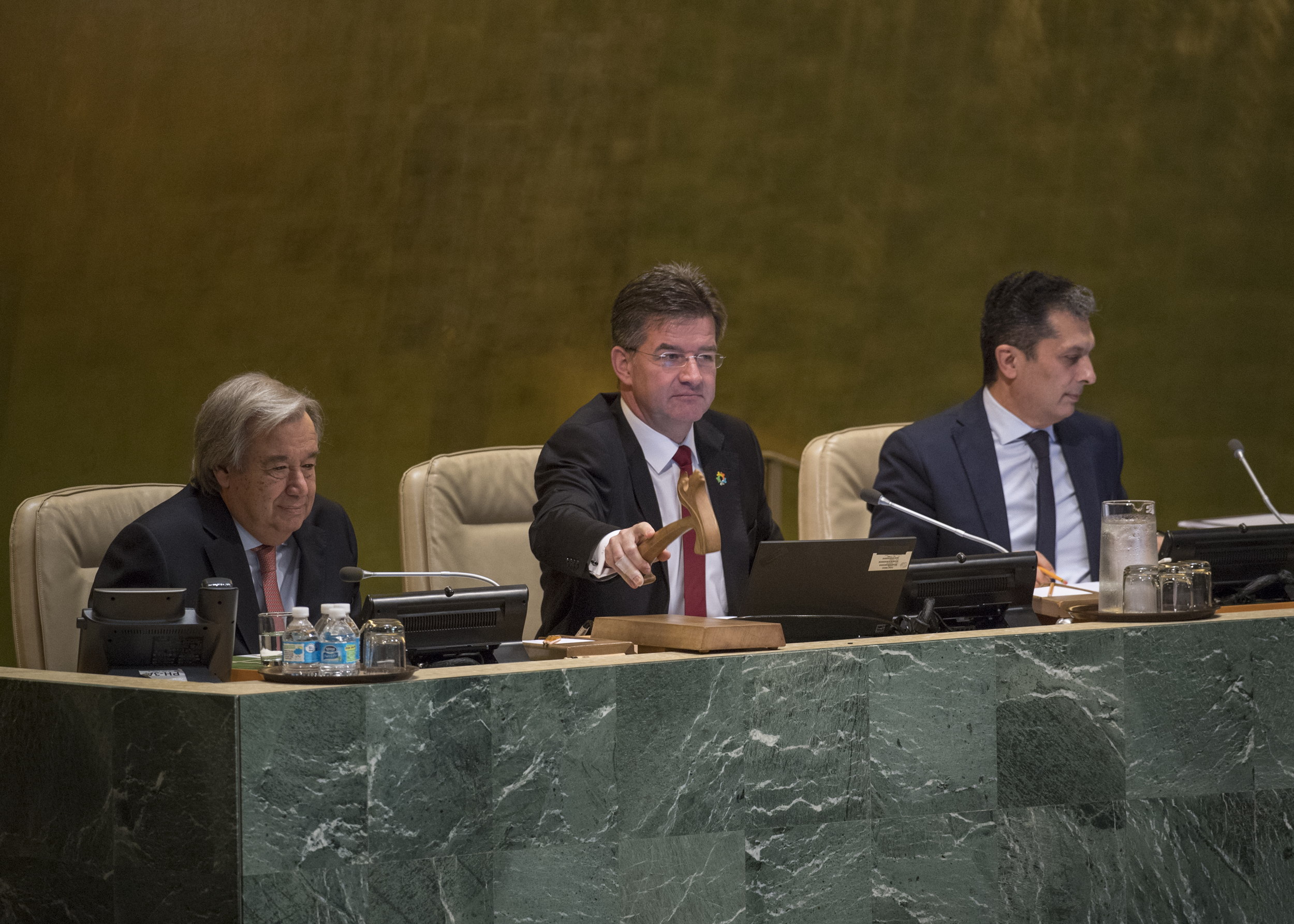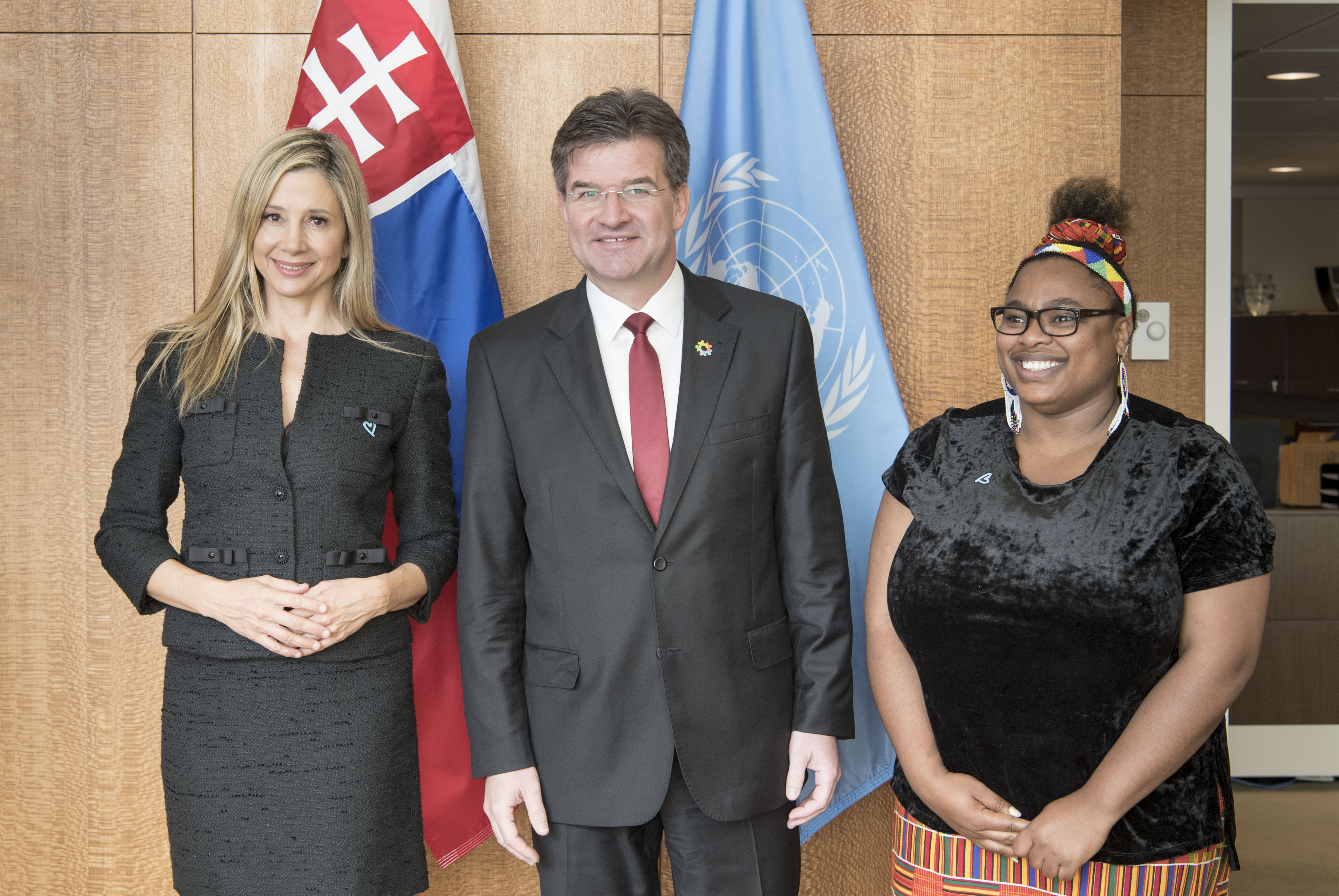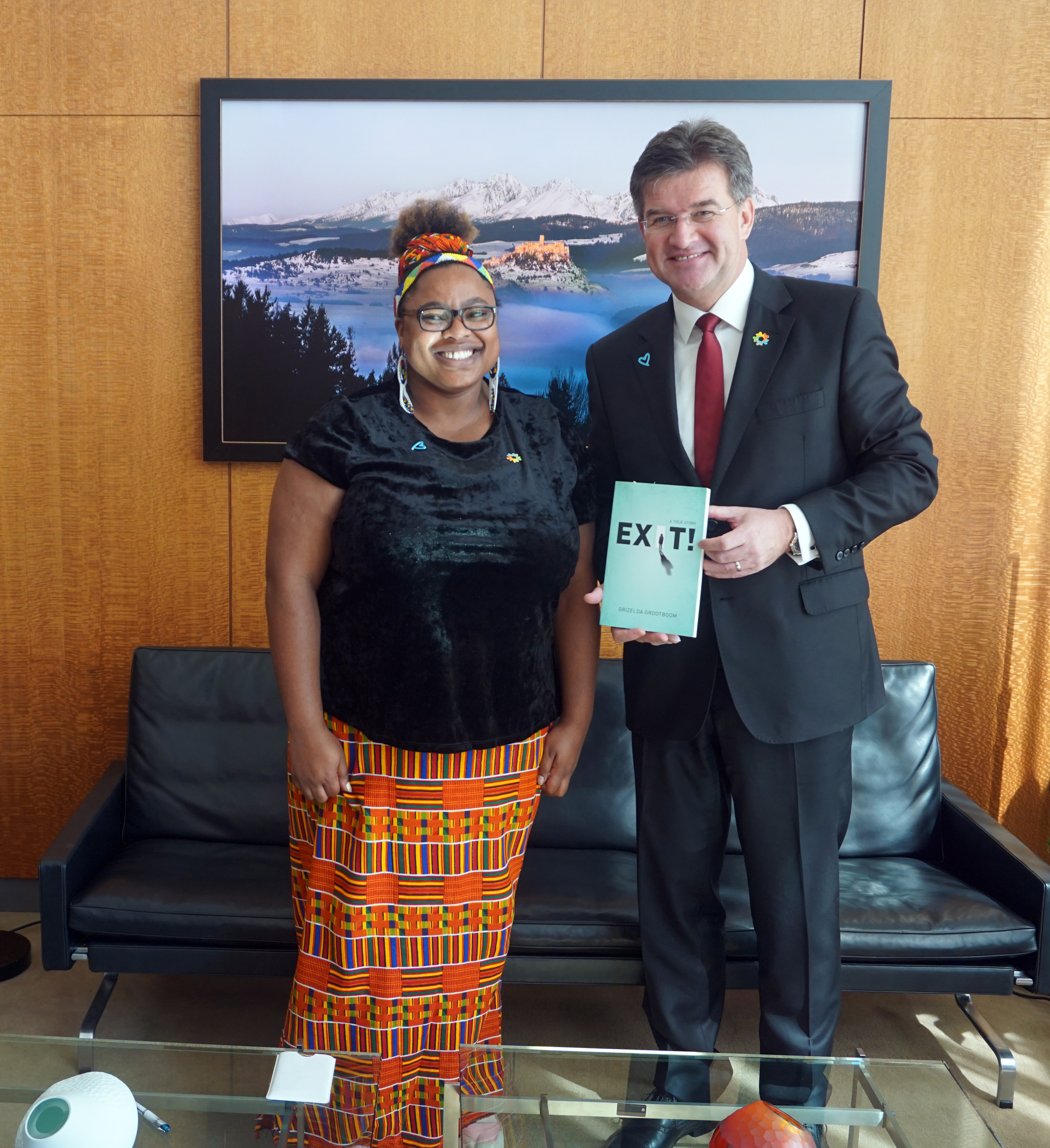High-level Meeting on the Appraisal of the Global Plan of Action to Combat Trafficking in Persons

– As delivered –
Statement by H.E. Mr. Miroslav Lajčák, President of the 72nd Session of the UN General Assembly, at the High-level Meeting on the Appraisal of the Global Plan of Action to Combat Trafficking in Persons
His Excellency Mr. Antonio Guterres,
Honorable Ministers,
Distinguished guests,
Excellencies,
Ladies and gentlemen,
Welcome and thank you all for your presence and engagement.
Last weekend I was deeply moved by my conversation with Shireen Ibrahim – a Yazidi woman and advocate who survived human trafficking at the hands of terrorists. Her dignity, human rights and her person were violated. Her story shows the horrors and complexity of this scourge. But most importantly, it is a somber reminder that we are talking about people here.
We are not having this meeting to cross it off our “checklist”. We are here to track the progress we have made so far. And to see how much further we have to go to eliminate human trafficking forever.
Today we recommit ourselves to the fight against all forms of human trafficking. We pledge, once again, our respect for the human rights and dignity of our people. The declaration to be adopted today shows our political will to end human trafficking. But this will must be manifested in actions. Only then will it be meaningful for the people affected.
I would like to highlight three main points:
First, that a focus on people in this context means a victim and survivor centered approach. It also means upholding the human rights and dignity of people like Shireen Ibrahim, Grizelda Grootboom and many others. I pause to pay special tribute to the victims and survivors, some of whom are with us here today. Their presence reminds us of the reason we are here – so that people can live freely and peacefully – free from the threat of human trafficking. And for those victims and survivors who do not have a platform, we have a duty to be their voice. This is why the United Nations is here.
Second, we must strengthen our prevention efforts. Today’s global peace and security challenges amplify the risk of human trafficking. We need to address root causes.
Shireen Ibrahim’s story underscores what we already know: Preventing conflict helps to prevent human trafficking. The chasm between peace and war has many perils – human trafficking is one of them. Conflicts and humanitarian disasters force millions to flee their homes. With human trafficking and migration following similar geographical patterns, some get caught at the ever-shifting intersection of the two.
Further, we are confronted by terrorists and criminals who have no regard for human suffering. They thrive on the instability created by conflicts and humanitarian crises. A lack of strong institutions and absence of rule of law allows human trafficking to continue with impunity. We also know that these groups derive financing from this criminal enterprise.
These are but a few dimensions of human trafficking. The full picture is complex and many-sided. But what is common across the whole spectrum is that – prevention is better than cure. Poverty, human rights violations, food insecurity and other vulnerabilities fan the flames of human trafficking. Financial benefit provides the oxygen. We must starve traffickers of benefits while addressing both the “demand” and “supply” side of the problem. For this, we need all hands on deck – for what we in the United Nations call, “a multi-stakeholder approach”.
Third, those most at risk among us need our special attention. Women, children, internally displaced persons and refugees are among the most vulnerable to human trafficking. 79% of all detected victims are women and children. Human trafficking’s focus on women and children threatens to unravel the fabric of our society. It rolls back the progress we have made. Therefore, we must put the spotlight on the most vulnerable to trafficking.
Last weekend I was deeply moved by my conversation with Shireen Ibrahim – a Yazidi woman and advocate who survived human trafficking at the hands of terrorists.
Excellencies,
Lastly, and importantly, we have many plans and instruments. We must take further concerted action to achieve a world free of human trafficking. Our plans include:
- The Global Plan of Action;
- The United Nations Convention against Transnational Organized Crime and its Protocol to Prevent, Suppress, and Punish Trafficking in Persons, Especially Women and Children;
- The Sustainable Development Goals – Across Goals 5, 8 and 16, we are called upon to end human trafficking, with particular emphasis on women, children and decent work; and
- The New York Declaration adopted at the 2016 UN Summit for Refugees and Migrants.
Another important instrument is the political declaration to be adopted today. I thank the Permanent Representatives of Qatar and Belgium for their invaluable efforts that led us to a consensual outcome.
I urge continued contribution to the United Nations Voluntary Trust Fund for Victims of Trafficking in Persons. The Fund is an important part of our commitment to help victims and survivors recover from the crime, reclaim dignity, as well as minimize the risk of re-victimization and re-trafficking. Resources must match the scale of the challenges we face in fighting human trafficking.
Excellencies,
Human trafficking knows no borders. It affects people in the north and south and has many faces.
We have made progress but we have much further to go. Our goal is zero trafficking. Let us commit to stronger cooperation for decisive global action. Let us leave the abhorrent trade in human beings in the past forever!
I thank you for your attention.







